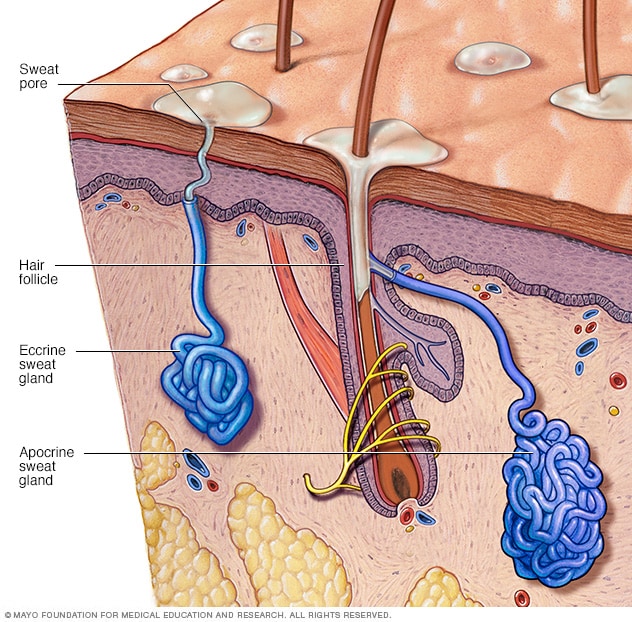The human apocrine gland is a tubular coiled secretory gland lined by a simple cuboidal epithelium that surrounds the lumen. Apocrine ducts have the same histological characteristics as eccrine ducts. However, the inner part of the epidermis of the apocrine gland is straight and not coiled like acrosyringium.
What color is the apocrine gland?
Lipofuscin pigment is the cause of chromhidrosis. This pigment is produced in the apocrine glands and its various oxidative states explain the characteristic yellow, green, blue, or black secretions observed in apocrine chromhidrosis.
How can you distinguish between eccrine sweat glands and apocrine sweat glands?
Eccrine sweat glands are small sweat glands. They are coiled tubular glands that expel secretions directly to the surface of the skin. Apocrine glands are coiled tubular glands that drain into the ducts of the hair follicles.
Where are the apocrine glands on the skin?
Apocrine glands are open to the hair follicles and connect to the surface of the skin. Apocrine glands occur in areas rich in hair follicles, such as the scalp, armpits, and crotch.
What does the apocrine sweat gland do?
The apocrine sweat glands associated with the presence of human hair (scalp, armpits, genital area, etc.) continuously secrete concentrated fatty sweat into the ducts. Emotional stress stimulates the contraction of glands and expels their contents.

Below you will find two helpful answers on a similar topic. 👇
What is the difference between apocrine sweat and regular sweat?What are two types of apocrine glands?
